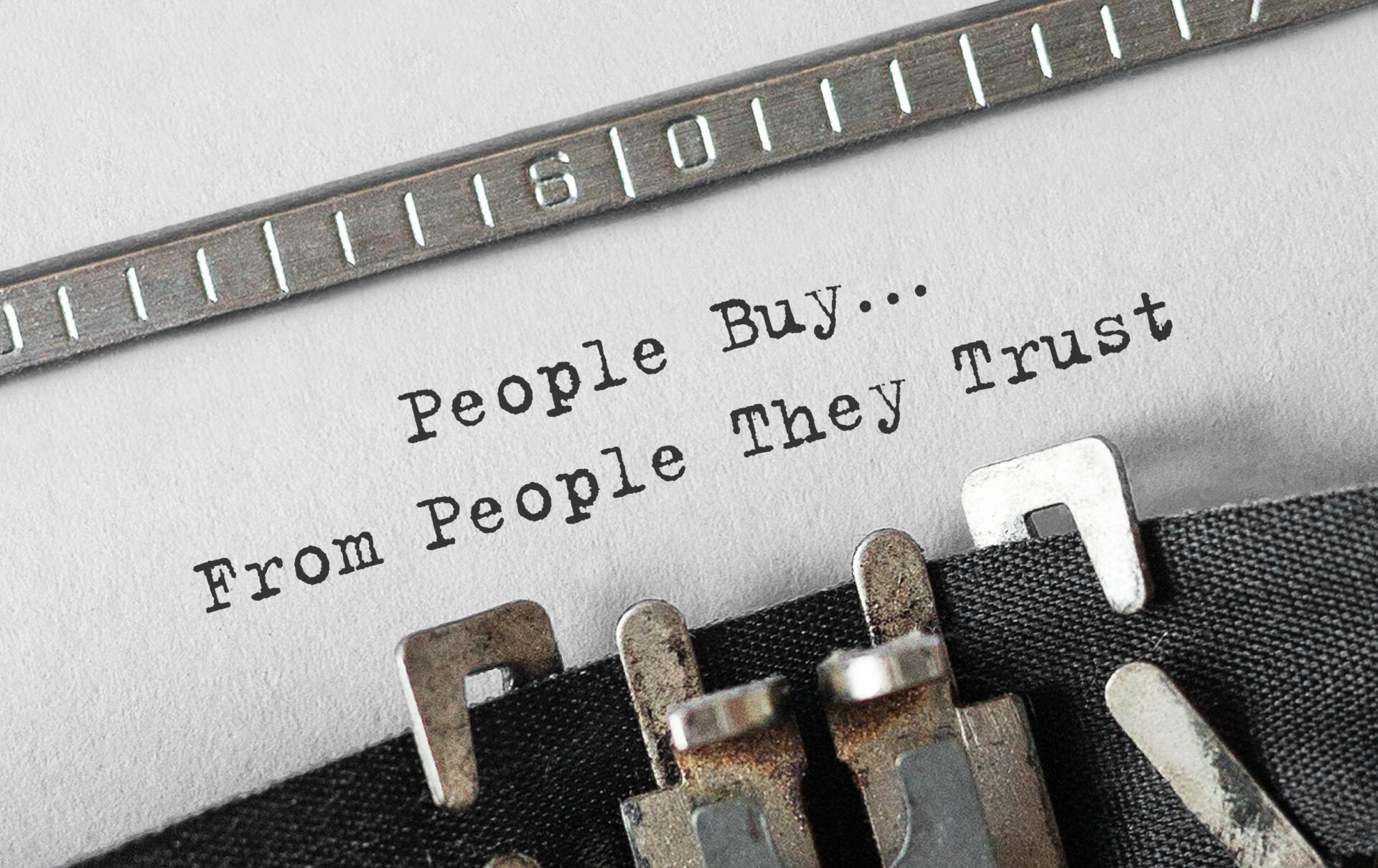
Every company needs a strong strategy to reach their customers. But smart companies know their business and marketing strategies should be driven by a strong brand.
Brand-driven strategy means your brand is the force behind all external and internal communications. Implementing this kind of strategy results in a cohesive brand experience, ensuring alignment across touchpoints. People know who you are and what you stand for in an instant. And that matters.
Because a strong brand is your most effective tool for getting people to take action.
Customers know exactly what kind of product, experience, and results they’ll get from brands they recognize, and they are incredibly loyal to them.
Think about it. When given the choice between staying at a Hilton or an Airbnb, which would you choose?
You might be an adventurer looking for a unique, bespoke experience. You’d go for the cute, stylish Airbnb. Or you might be a traveler looking for a predictable, known experience that’s the same no matter where you go. You’d go for the Hilton. Neither is better than the other, they’re just for different people. But regardless of what you like, you know exactly what you’re getting into. You’re able to choose between the two in a second.
And it’s bigger than just price– your choice actually says something about your identity. Do you always go with the trusted, dependable option? Are you spontaneous and a little more risky? The connotation that these two companies bring to mind is deeper than just “places to stay.” It’s an emotional connection. And that’s much more powerful than selling a product or service alone.
Hilton and Airbnb are very different companies, but they both have brand-driven strategies. They know who they are, and everything they do reinforces that fact. They aren’t trying to be everything to everyone. Instead, they occupy a unique position in the market that appeals to a specific customer persona. In this way, Hilton and Airbnb pre-qualify their audiences– because they know their position and ideal customer, they speak directly to the most receptive people. This results in a customer base that’s highly loyal, forging a connection much deeper than price.
It’s all because their brand is the driving force behind everything they do. Branding is more than just good looks– it’s an active, tangible ingredient in your company’s success. If you want to incorporate brand into your overall strategy, you’re in the right place. Here are seven steps to effectively executing brand-driven strategy in your business.
1. Know where you’re starting from– and close the gap to where you want to be.
Before you can execute a brand-driven strategy, you need to make sure you have a solid brand to begin with. Who are you? What do you stand for? What need do you fill? If you can’t answer these questions, you risk confusing your image further.

Let’s say your customers see your brand as dependable, realistic, and grounded. Any brand-driven strategy will need to take that into account and lean into it. That might mean running a campaign to strengthen that image.
Conversely, if that’s not how you want your brand to be seen, it could also mean addressing that image as the past in order to introduce a new future. Either way, you need to know what your story is before you can start telling it to the world.
At Flux, we use the IDEA method as the brand strategy framework for our branding services. The first step is always a brand audit to understand where your company is, where it’s going, and how to close that gap. It’s called the Ignite phase, in which we undertake competitive, audience, and employee research to get a sense of how you’re seen and how you wish to be seen.
2. Know who you are– and say it loud and clear.
What’s your mission? What’s your ethos? And what makes you different? Knowing your position in the market and communicating it effectively is key. Without the core intelligence of who you are and why you exist, you can’t begin to implement brand-driven strategy for your company.

At Flux, after the Ignite phase of gathering information about your company and market landscape, we move into the Distill phase. This is where we find your brand position– how you fit into the market and what niche you fill. The result is an internal strategic document that lays out your reason for being and unique differentiators, in a voice that’s unique to your brand. It’s the foundation from which everything else can be built. Think of it like a manifesto.
Once you have a clear brand position, then you can build an entire strategy from it. But without that, you’re just shooting in the dark.
3. Think beyond your logo. Brand is an experience.
We can’t stress enough that your brand is who you are as a company. This means that executing brand-driven strategies can’t be restricted to the creative and ad departments. Your brand needs to shine through the entire customer experience.

We’ve all encountered companies that don’t align with their brand. Think of a company that had poor customer service, a bad work environment, or a subpar product that was harshly contrasted with the image they presented.
All branding is emotional branding. And in the example here, customers might feel betrayed or frustrated. The feeling might be overt, or more subconscious. But this will impact their decision to become a repeat customer.
If your strategy is truly brand-driven, you avoid inconsistencies across different faces of your company. With a clear idea of who you are and what you need to communicate, every action you take should be aligned with that goal. That creates a cohesive brand experience, ensuring memorability and trust.
The brand positioning document you get from our Distill phase can help with this. As you share it internally, you can make it clear just how important acting in alignment with your brand is. From there, you need to audit every customer touchpoint along the buyer journey to look for branding inconsistencies. We call these opportunities– and we’ll help you make the most of them.
4. Make sure your team is all on the same page.
As with a new product launch or marketing initiative, your team needs to be in the know when it comes to executing brand-driven strategies. Depending on their role within the company, each person may require a different level of education about what the company hopes to achieve moving forward.
It’s normal for your employees to wonder, “What is a branding strategy?”
One thing you never want them to wonder, however, is “What is our brand?”
Executing a brand-driven strategy is impossible if your brand is unclear internally. Your brand is who you are as a company. Team member buy-in is imperative. Otherwise, your brand on paper will be lightyears away from your brand in reality.
At Flux, we solve this problem during the Distill phase of the IDEA Method. The Distill phase gives you a comprehensive, internal document that communicates your brand to your team. This is used as the guiding light during the Energize and Activate phase, where we send your brand out into the world.
5. Let brand strategy drive your campaigns.
Your brand is bigger than one campaign, but it should be the guiding force behind each marketing campaign you undertake. If your marketing strategy isn’t brand-driven, you’re going to present a confused image to the world. If you keep the brand as the north star, you can have many different creative iterations to show who you are, but you’re always expressing a consistent concept. That does wonders for memorability and building trust.

Let’s consider some examples of brand-driven marketing campaigns:
Airbnb’s strangers aren’t strange campaign or Apple’s 1997 Think Different campaign are both hallmarks of well-executed brand strategy. These campaigns aren’t selling a place to stay or a Macbook computer. They’re selling the emotions, memories, and desires their audience connects with.

Even product marketing campaigns like Hilton’s For the Stay or Samsung’s Buckle Up are brand-driven, while still focusing on specific products. “For the Stay” is specifically marketing hotels as different from Airbnbs. “Buckle Up” is specifically marketing the Galaxy S22 Ultra as different from the iPhone. But the focus is still about evoking an emotion from the person viewing the campaign. This, in turn, creates positive brand awareness on a larger scale than just the particular product they are pushing.
At Flux, the Energize phase of our IDEA Method is when we use brand-driven strategies to stoke your customer’s emotions out in the world. This is when we develop external communications– content, campaigns, websites, and more.
When you use brand-driven strategy to inform your external communications, campaigns are about much more than product marketing– they’re about bringing people into your story and your ethos. The idea is to get people to buy not just because they like your product, but because they like who you are. They feel belonging to your brand says something about their own identity. That will keep them coming back no matter how stiff the competition gets.
6. Bring together branding and marketing.
Your brand, just like your business, is a living, breathing, changing entity. This means that rebranding or refreshing your brand is necessary from time to time, especially when you’re taking a hard look at your business strategy. When you’re gearing up for these, finding a branding agency should be on your rebranding checklist.
You might be tempted to look at your brand yourself. You know your company better than anyone, right? But getting an outside perspective can be critically useful here. It can be hard to see yourself as your customers do when you know your business so well. Even trusting an internal department – like your marketing team – to handle a branding project is likely to go awry.
Your marketing team knows how to run product marketing campaigns and move people to visit your site or click a link, hopefully making a purchase. That’s their area of expertise. But implementing brand strategy services is a different beast.
Rather than looking for clicks and views, branding is about creating a connection. Branding is inherently a creative and emotional process. A branding agency should help you find your overall brand identity– your personality, voice, look, and feel. This goes hand in hand with marketing– the brand is the what while marketing is the how. Branding determines the kind of content your marketing team will use, while marketing is about the tactics of getting it in front of people.

During the Activate phase at Flux, we use brand campaigns to attract customers to your business based on ethos. Branding campaigns are long term loyalty building exercises. They might not convert as many followers and buyers in the short term, but over time they build recognition, trust, and eventually loyalty from your audience– which are the keys for sustained success. Therefore, the metrics your branding agency measures may look different than the metrics you’ve tracked your other campaigns with.
7. Decide who you’re for, then focus on building connection.

Brand campaigns should help you show up in the right place at the right time. An experienced branding services agency knows just how to make this happen.
Being in the right place at the right time doesn’t happen because you spend time, energy, and money to be front-and-center on every platform 24/7. Not only is true omnipresence impossible to achieve, but it may be impractical.
Your branding goals should be to reach your ideal customers when and where it’s most relevant – and they are most receptive.
Branding isn’t about reaching “people.” It’s about reaching the right people at the right time and connecting with them on an intimate, personal level. So executing brand-driven strategies for your company shouldn’t be about simply “getting out there.” It should be about showing the most receptive people who you are and what makes you different, in a way that is cohesive across all external communications. But it all starts from having a solid foundation– you can’t know who you’re going after if you don’t know who you are.
Excellently executing brand-driven strategies
Branding can be tough – especially for founders, C-suite executives, or anyone who spends their time looking at the way a company is performing at a high level. It requires thinking outside the box, and synthesizing creativity into concrete actions.
Creating a brand is about connecting with people on an emotional level. Making promises about your products is nice, but making promises about who you are and who you can help your customers become can completely change the future trajectory of your business. And that’s exactly what a truly brand-driven business strategy can do.
In order to execute brand-driven strategy in your business, take these 7 steps:
1. Brand Audit: This 360 assessment of your competitors, audiences, internal culture and future objectives is key for charting a successful strategy. You need to know where you’re starting from in order to get where you want to go.
2. Brand Position: Your position is your unique space in the market. It’s the big idea that will inform all strategies moving forward. You need to know who you are– and say it loud and clear.
3. Brand Experience: Think beyond your logo. Brand is your entire company. Look at every touch point your customers have with your business, and make sure that the brand is coming through.
4. Brand Culture: Make sure your team is all on the same page. If your employees don’t know what your brand is, you’ll never communicate it to your customers.
5. Brand Campaigns: Let brand drive your campaigns. All external communications should be unified by the brand– there can be many creative iterations, but the underlying message and concepts should always be constant.
6. Brand Marketing: Bring together branding and marketing. Your marketing team knows how to get eyes and clicks, but it’s the brand that informs what content the eyes and clicks are going to. Branding and marketing need to work in a symbiotic relationship. When they do, engaging with a company becomes more than a transaction– it’s an emotional connection.
7. Brand Connection: Once you know who you are, how to communicate it, and have effectively instilled it at every level of your organization both internally and externally, you’re ready to make people love you. If you know who you are, you also know who your customer is– so you can focus on appealing to the most receptive people, building long term loyalty and affinity.
The results of brand-driven strategy are incredible: greater internal alignment, more effective sales and marketing, and a loyal customer base that’s emotionally connected to your company. It’s not easy, but the outcomes are well worth the effort.
Flux is a branding agency in Los Angeles that has worked with hundreds of clients all over the country. As a result, we have the frameworks, know-how, and technical expertise to take your brand to the next level. Get in touch today to see the difference a focused brand strategy can make.